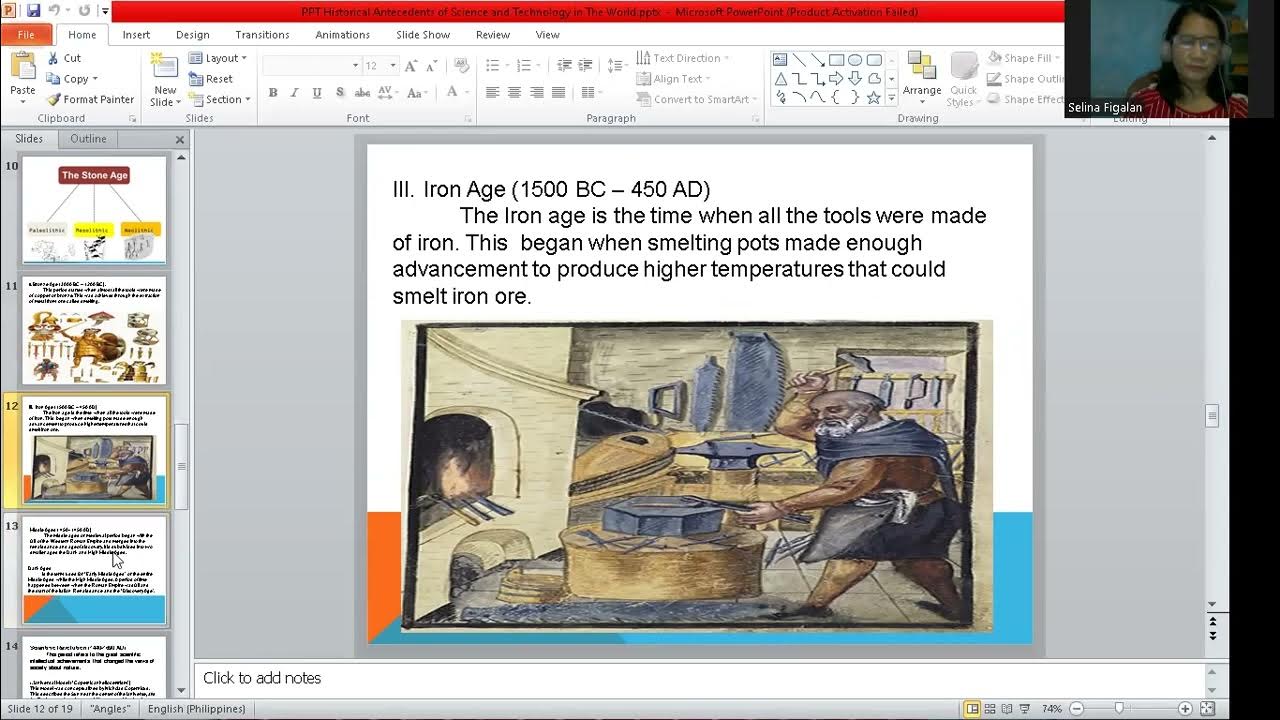The Three Stone Age Eras
Summary
TLDRThe Stone Age is divided into three periods: Paleolithic, Mesolithic, and Neolithic. The Paleolithic began with humans using flint for tools, living nomadically, and hunting wild horses and deer. The Mesolithic saw a warmer climate, with hunter-gatherers focusing on deer and wild boar, and the development of new hunting tools. The Neolithic marked the shift to farming with domesticated animals, crop cultivation, and the construction of burial mounds and monuments. Individual burials became more common towards the end of this period.
Takeaways
- 🗺️ The Stone Age was divided into three periods: Paleolithic, Mesolithic, and Neolithic.
- 🛠️ The Paleolithic period was marked by the use of stone tools, primarily flint, for hunting and making jewelry.
- 🏞️ During the Mesolithic, Britain's climate warmed, leading to the growth of forests and the emergence of rivers and lakes.
- 🐎 In the Mesolithic, hunting tools evolved to include harpoons and spears, and the prey shifted from large herds to deer and wild boar.
- 🌾 The Neolithic period saw a shift from hunting and gathering to farming, with the domestication of animals and cultivation of crops like wheat and barley.
- 🏡 Settlements became more permanent during the Neolithic, with the construction of long barrows and henges.
- 👥 People in the Paleolithic were nomadic, living in caves or temporary shelters.
- 🎣 The Mesolithic period saw an increase in fishing and fowling due to the abundance of fish and wild birds.
- 🏺 Pottery became a common possession as people settled down towards the end of the Mesolithic.
- 🪦 Burial practices evolved from communal to individual burials during the late Neolithic period.
Q & A
What are the three ages of the Stone Age?
-The three ages of the Stone Age are the Paleolithic (Old Stone Age), Mesolithic (Middle Stone Age), and Neolithic (New Stone Age).
What type of stone was commonly used during the Paleolithic age?
-Flint was the type of stone commonly used during the Paleolithic age as it could easily be shaped into sharp, pointed tools.
What materials other than stone were used to make tools and jewelry during the Paleolithic age?
-Bones, antlers, shells, amber, animal teeth, and mammoth ivory were also used to make tools and jewelry during the Paleolithic age.
How did people live during the Paleolithic age?
-People were nomadic during the Paleolithic age, moving around to hunt animals such as wild horses and red deer, and lived in caves or temporary shelters.
What significant changes occurred in the environment during the Mesolithic age?
-During the Mesolithic age, the climate in Britain grew warmer, forests and woodlands began to grow, and rivers and lakes appeared.
What new hunting tools were developed during the Mesolithic age?
-New hunting tools such as harpoons and spears, with small sharp pieces of flint attached to the end, were developed during the Mesolithic age.
How did the lifestyle of people change towards the end of the Mesolithic period?
-Towards the end of the Mesolithic period, people began to set up farms and villages, settling in one place rather than moving around.
What types of animals were commonly farmed during the Neolithic age?
-Pigs, sheep, goats, and cattle were common farmyard animals during the Neolithic age.
What crops were grown by farmers during the Neolithic age?
-Farmers grew wheat and barley during the Neolithic age.
What types of structures were built during the Neolithic period to bury the dead?
-During the Neolithic period, people began to build long barrows, which are mounds of earth with a ditch around them, to bury their dead.
How did burial practices change from the early to the late Neolithic period?
-Communal burials were normal during the early Neolithic period, but by the late Neolithic period, individual burials were becoming much more common.
Outlines

Dieser Bereich ist nur für Premium-Benutzer verfügbar. Bitte führen Sie ein Upgrade durch, um auf diesen Abschnitt zuzugreifen.
Upgrade durchführenMindmap

Dieser Bereich ist nur für Premium-Benutzer verfügbar. Bitte führen Sie ein Upgrade durch, um auf diesen Abschnitt zuzugreifen.
Upgrade durchführenKeywords

Dieser Bereich ist nur für Premium-Benutzer verfügbar. Bitte führen Sie ein Upgrade durch, um auf diesen Abschnitt zuzugreifen.
Upgrade durchführenHighlights

Dieser Bereich ist nur für Premium-Benutzer verfügbar. Bitte führen Sie ein Upgrade durch, um auf diesen Abschnitt zuzugreifen.
Upgrade durchführenTranscripts

Dieser Bereich ist nur für Premium-Benutzer verfügbar. Bitte führen Sie ein Upgrade durch, um auf diesen Abschnitt zuzugreifen.
Upgrade durchführenWeitere ähnliche Videos ansehen

Stone Age | Prehistoric age | Paleolithic | Mesolithic | Neolithic | Stone Age Humans

A Pré-História - Paleolítico, Neolítico, Mesolítico e Idade dos Metais

MASA PRAAKSARA || |Periodisasi Secara Arkeologis

Historical Antecedents of Science and Technology in the World

Manusia Prasejarah | Pembagian Zaman Batu dan Logam (Arkeologi & Geologi) | IPS Kelas 8

How to Create Trending Historical Documentaries Using Kling AI 3D Animation (A-Z Guide)
5.0 / 5 (0 votes)
